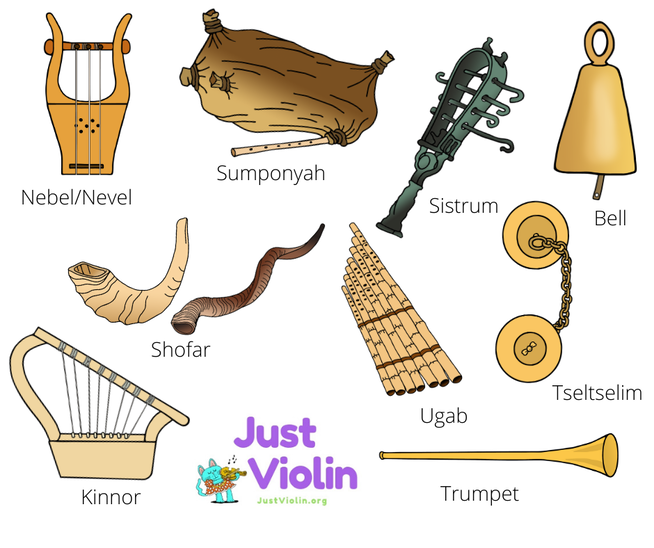Hebrew Musical Instruments: A Vital Part Of Culture
by James Peterrson
|
|
In the Hebrew tradition, music is an excellent form of communication: it facilitates religious ceremonies and celebrates victorious battles. The bible regarded Jubal as the inventor for most of the Hebrew musical instruments, and the forefather of all musicians. The whole Hebrew history and literature showed that the Hebrews were very committed to cultivate music. The times of David and Solomon were the golden age of Hebrew music; they developed and taught music as one of the main subjects in schools. Hebrew musical instruments were also widely used in their private lives for entertainment.
Among all the Hebrew musical instruments, the string instruments have a prominent place. Examples of string instruments include the kinnor - harp, the nebel, and the sabbeka. Among the wind instruments, there are the ugab – pipes/flute, the shofar – horn/cornet, the halil – oboe, and the sumponyah – bagpipe. The Hebrew musical instruments from the percussion category include the toph – frame drum, the tabret - tambourine, the paamon – the bells, the tseltselim – cymbals, the sistrum - rattles, and the shalishim – triangles. (The Hebrew terms and its English counterparts are subjected to various interpretations.)
The harp (kinnor in Hebrew) is the national musical instrument of the Hebrews; it was invented by Jubal and used as an accompaniment to Hebrew songs such as praise to God. The psaltery, zither, dulcimer, and lute are other types of string instruments used in the Hebrew tradition.
The horn is named shofar in Hebrew because of its bright and clear sound. It was not only used as a musical instrument, but also used metaphorically for strength and honor, as emblems of power. Trumpets came in a large variety of forms, and were made in different materials. Silver trumpet is a distinct Hebrew musical instrument, and is used by the high priest to announce a war or a festival. The flute is composed of several pipes; it is one of the simplest and most ancient types of instruments.
The bells were significant Hebrew musical instruments; they were attached to the hem of the high priest’s ephod. Cymbals were also a prevalent Hebrew musical instrument - two pieces of brass, one for each hand, are clashed together to produce a deafening sound. The tabret/timbrel is a one-sided drum like the tambourine.
*This article is republished with permission.
The harp (kinnor in Hebrew) is the national musical instrument of the Hebrews; it was invented by Jubal and used as an accompaniment to Hebrew songs such as praise to God. The psaltery, zither, dulcimer, and lute are other types of string instruments used in the Hebrew tradition.
The horn is named shofar in Hebrew because of its bright and clear sound. It was not only used as a musical instrument, but also used metaphorically for strength and honor, as emblems of power. Trumpets came in a large variety of forms, and were made in different materials. Silver trumpet is a distinct Hebrew musical instrument, and is used by the high priest to announce a war or a festival. The flute is composed of several pipes; it is one of the simplest and most ancient types of instruments.
The bells were significant Hebrew musical instruments; they were attached to the hem of the high priest’s ephod. Cymbals were also a prevalent Hebrew musical instrument - two pieces of brass, one for each hand, are clashed together to produce a deafening sound. The tabret/timbrel is a one-sided drum like the tambourine.
*This article is republished with permission.

